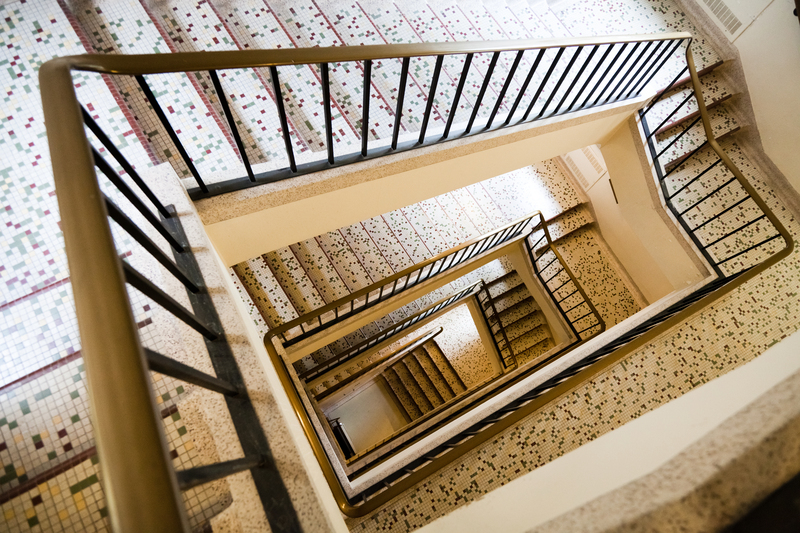Top Mistakes to Avoid When Moving Your Bed and Mattress
Moving to a new home is an exciting chapter, but it comes with its own unique set of challenges. Among the bulkiest and trickiest items to move are your bed and mattress. Whether it's a queen-size memory foam or a king-sized spring mattress, relocating these large items can go wrong in many ways. In this comprehensive article, we'll explore the top mistakes to avoid when moving your bed and mattress, ensuring your sleep sanctuary arrives at your new space safe, clean, and damage-free.
Why Focusing on Bed and Mattress Moving Mistakes Matters
Your bed and mattress are significant investments, both financially and for your well-being. Damages during a move can be costly, and inadequate handling can even void warranties or introduce unwelcome hygiene issues. Understanding how to properly move your bed and mattress can help you protect your property, save money, and guarantee a good night's sleep in your new home.

The Most Common Mistakes When Moving Beds and Mattresses
Many homeowners underestimate the complexity of moving a bed and mattress. Let's delve into the most frequent errors and how you can sidestep them:
1. Not Properly Measuring Doorways and Paths
- Failing to measure your bed frame, mattress, and hallways/doorways beforehand.
- Getting stuck mid-move and risking damage to your mattress fabric or frame edges.
Tip: Always measure both the items and your intended path before moving day. Sketch a floor plan and note any narrow passages--this is crucial for beds with large headboards or thick mattresses.
2. Skipping Mattress Protection
- Moving your mattress without any protective wrapping exposes it to dirt, moisture, and potential tears or stains.
- Beds and mattresses that contact the ground, truck beds, or dirty floors may become a breeding ground for bacteria and allergens.
Solution: Use a mattress bag or high-quality plastic cover sealed with tape. You can also purchase specially designed mattress carriers that offer grab handles and weather resistance.
3. Attempting to Move Beds and Mattresses Alone
- Trying to lift a heavy mattress or awkward bed frame solo can cause injuries and property damage.
- Improper lifting techniques may lead to strained backs or dropped, broken furniture.
Recommendation: Enlist a friend, family member, or professional movers. Use moving straps and always lift with your legs, not your back.
4. Forgetting to Disassemble Bed Frames
- Hauling bed frames in one piece increases the risk of scratches, dents, or broken joints.
- It's harder to navigate corners, tight spaces, and stairways with a fully assembled frame.
Pro Move: Take your bed apart according to manufacturer instructions. Keep screws, bolts, and small parts in a labeled bag taped to the frame or stored in a marked box for easy assembly later.
5. Not Labeling Hardware and Bed Components
- Misplacing screws, slats, nuts, or connectors leads to frustration during reassembly.
- Every bed is unique, and missing parts may render your frame unusable until replacements arrive.
How to Avoid: Use plastic bags or small containers with clear labels. Take photos during disassembly to aid in later setup. Consider color-coding section parts for king or queen bed frames with multiple connectors.
6. Ignoring Cleaning Before the Move
- Moving dust, hair, and allergens with your mattress and bed can introduce extra dirt into your new home.
- Neglecting to check for bed bugs or other pests risks infestation.
Best Practice: Vacuum and inspect your mattress and bed thoroughly before wrapping. Use a gentle cleaning solution (check manufacturer guidelines) and confirm it's dry before packing.
7. Placing Heavy Items on Top of the Mattress During the Move
- Mattresses, especially memory foam and hybrids, can deform or sustain permanent indentations if compressed by furniture or boxes.
- Bedsprings can break or misalign when subject to uneven pressure.
Safeguard: Always transport mattresses upright on their side, never stacked. Keep other heavy items off them in the moving vehicle.
8. Not Using the Proper Vehicle or Tie-Downs
- Shoving mattresses and bed frames into vehicles that are too small can tear or bend them.
- Failing to secure your mattress during transit may cause it to shift, fall, or get damaged.
Smart Move: Plan ahead with a moving truck or van large enough for your bed and mattress size. Use ratchet straps or ropes to keep your items securely in place during the journey.
9. Leaving Mattresses Exposed During Bad Weather
- Mattresses may be ruined by rain, snow, or even extreme sun exposure if left uncovered outside, even briefly.
- Once wet, a mattress can develop mold and becomes almost impossible to fully dry.
Weatherproof: Move your mattress only during clear weather or use heavy-duty plastic to seal it from the elements. Avoid storing it outdoors, even temporarily.
10. Underestimating the Importance of a Plan
- Without a detailed plan, you're more likely to encounter problems, make mistakes, or waste time and energy on moving day.
- Last-minute scrambling increases stress and can lead to forgotten steps or overlooked hazards.
Preparation: Make a moving checklist specifically for your bed and mattress. Allocate enough time to each step--disassembly, cleaning, packing, transportation, and reassembly.
Expert Tips for Successfully Moving Your Bed and Mattress
Now that you know what not to do when moving your bed and mattress, here's how to do it correctly. Implement these expert tips for a smooth, safe, and stress-free experience:
1. Gather the Right Tools and Supplies
- Mattress bags or heavy-duty plastic covers
- Furniture pads or blankets for the bed frame
- Moving straps and ropes
- Tool kit with screwdrivers and Allen wrenches
- Labeled bags or containers for hardware
- Markers for labeling components
2. Protect Yourself and Your Space
- Wear gloves to enhance your grip and protect hands from splinters or sharp edges.
- Clear a path from the bedroom to the truck, removing tripping hazards.
- Use corner protectors to avoid damage to walls and furniture.
3. Follow Mattress and Bed-Specific Moving Instructions
- Check your mattress and frame manufacturer's care guidelines. Some beds have special disassembly or handling requirements that, if ignored, void warranties.
- Specialty items, such as adjustable bases or platform beds, may require unique packing or transportation methods.
4. Pay Attention to Storage Conditions
- If you can't move your bed and mattress to your new home immediately, store them in a climate-controlled storage unit.
- Stack mattresses upright to prevent warping and keep them fully covered to block dust and pests.
5. Reassemble With Care in the New Space
- Lay out all parts before starting, following your notes or step-by-step photos from disassembly.
- Double-check that all bolts are tight and slats or supports are correctly positioned. A properly assembled bed frame improves mattress longevity and your overall comfort.

Frequently Asked Questions about Moving Beds and Mattresses
Q: Can I fold my mattress to fit in a car or small moving van?
Only some mattresses, like thin foam or futon models, can tolerate temporary folding. Traditional innerspring or hybrid mattresses should never be folded as it can permanently damage the internal structure. Always refer to your mattress brand's moving guidelines.
Q: Is it safe to move a mattress on my car roof?
It's not recommended. Transporting a mattress on a car roof risks injury, damage, or even causing an accident if it's not tightly secured. Strong winds can instantly lift unsecured mattresses off, endangering others on the road. If you must, use strong ratchet straps (not just rope or twine) and keep the distance as short as possible. Ideally, use a moving van or truck for safety.
Q: How can I clean my mattress before moving?
Vacuum all sides thoroughly to remove dirt and dust. Spot clean any stains with a mild detergent and water solution. Allow it to dry completely before packing to avoid mold or mildew. If possible, sprinkle a light layer of baking soda to deodorize, vacuuming it off after an hour before wrapping your mattress.
Q: Should I hire professional movers to move my bed and mattress?
If your mattress is large, heavy, or especially valuable, or if you live in a multi-story building, hiring professional movers with experience in handling beds and mattresses is a smart investment. They have the proper equipment, training, and insurance to ensure a safe and stress-free move.
Conclusion: Mastering Bed and Mattress Moves--Your Sleep Quality Depends On It!
As you embark on your next move, remember that avoiding common mistakes when moving your bed and mattress can save you time, money, and stress. Take the time to plan, prepare, and protect your sleep investment with the right packing techniques, suitable equipment, and a careful, organized approach.
Don't risk poor sleep, unexpected costs, or unwanted hassles in your new home. By steering clear of these top bed and mattress moving mistakes and embracing best practices, you'll arrive ready for a restful, comfortable first night in your new sanctuary.
For more guidance on moving tips, mattress care, and home comfort, explore our related articles and resources. Sleep well--wherever you land!